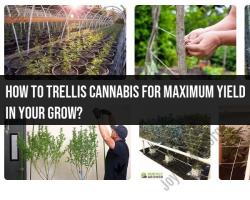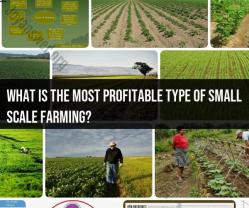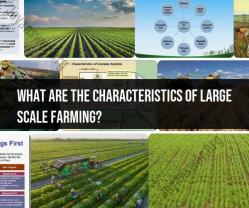How to maximize marijuana yield?
Maximizing marijuana yield involves various techniques and practices throughout the cultivation process. Here are some strategies that growers often use to optimize yields:
Genetics and Strain Selection:
Choose High-Yielding Strains: Select cannabis strains known for their high yield potential and suitability for your growing environment (indoor or outdoor).
Quality Seeds or Clones: Start with quality seeds or clones from reputable sources to ensure healthy and productive plants.
Optimal Growing Conditions:
Lighting: Use high-quality lighting systems appropriate for each growth stage (LED, HPS, or natural sunlight) to ensure adequate light intensity and duration.
Temperature and Humidity Control: Maintain optimal temperature and humidity levels suitable for the specific growth stage of the plants, preventing stress and diseases.
Air Circulation and Ventilation: Ensure good air circulation and ventilation to prevent mold, mildew, and maintain healthy plant growth.
Nutrient Management: Provide the appropriate nutrients and supplements during each growth phase, following a feeding schedule suitable for the strain.
Training and Pruning Techniques:
Topping and FIMming: Prune or trim the plants to encourage lateral growth, increase the number of colas, and improve light penetration.
LST (Low-Stress Training): Use techniques like tying down or bending branches to create a more even canopy and maximize light exposure.
Growth Control and Management:
Screen of Green (ScrOG): Implement a ScrOG method using screens or nets to create an even canopy, optimizing light distribution and increasing bud sites.
Supercropping: Gently stress the stems to encourage more robust growth and increased nutrient flow to the buds.
Monitoring and Maintenance:
Regular Inspections: Check plants regularly for signs of pests, diseases, nutrient deficiencies, or other issues that could affect growth and yield.
Harvest Timing: Monitor trichome development and other indicators to harvest at the optimal time, ensuring maximum potency and yield.
Proper Drying and Curing: Follow proper drying and curing procedures post-harvest to preserve the quality, flavor, and potency of the buds.
Note:
Legal Compliance: Ensure compliance with local laws and regulations regarding cannabis cultivation, especially in regions where it's legal for medical or recreational use.
Experimentation and Learning: Cannabis cultivation often involves trial and error. Growers may need to experiment with different techniques to find what works best for their specific setup and strains.
Attention to Detail: Consistency, attention to detail, and care throughout the entire growth cycle are crucial for maximizing yields while maintaining quality.
Selecting high-yielding cannabis strains suitable for the growing environment and cultivation techniques
Choosing the right cannabis strain is crucial for maximizing yield. Consider factors like:
Indoor vs. Outdoor Cultivation: Indoor cultivation allows greater control over environmental factors, enabling high-yielding strains like OG Kush, Gorilla Glue #4, and Zkittlez. Outdoor cultivation requires strains that thrive in varying conditions, such as White Widow, Amnesia Haze, and Northern Lights.
Experience Level: Beginners may prefer easier-to-grow strains like White Widow or OG Kush, while experienced growers can tackle more demanding strains like Gorilla Glue #4 or Zkittlez.
Desired Effects: Indica strains typically offer relaxation and pain relief, while sativa strains provide energy and creativity. Hybrid strains offer a balance of both effects.
Optimizing nutrient management and providing adequate lighting, ventilation, and humidity for cannabis growth
Nutrient management is essential for optimal cannabis growth:
Balanced Nutrient Solution: Use a balanced nutrient solution specifically designed for cannabis, providing the right ratio of macronutrients (nitrogen, phosphorus, potassium) and micronutrients (iron, zinc, calcium, etc.).
pH Levels: Maintain optimal pH levels for nutrient uptake, typically between 6.0 and 6.5 for hydroponics and 6.0 to 7.0 for soil-based growing.
Nutrient Scheduling: Adjust nutrient strength and frequency based on the plant's growth stage, providing more nutrients during vegetative growth and reducing them during flowering.
Lighting, ventilation, and humidity also play crucial roles:
Lighting: Provide sufficient light intensity and duration for photosynthesis. Use specialized grow lights like LED or HPS/MH fixtures, mimicking the sun's spectrum. Adjust the light cycle to match the plant's growth stage.
Ventilation: Ensure proper air circulation to remove carbon dioxide and excess moisture, preventing mold and mildew growth. Use exhaust fans and air intake vents to maintain adequate airflow.
Humidity: Maintain ideal humidity levels, typically between 40-60% during vegetative growth and 30-50% during flowering. Use humidifiers or dehumidifiers to regulate humidity levels.
Implementing effective pruning, trellising, and pest control strategies to maximize cannabis yield
Pruning, trellising, and pest control techniques further enhance cannabis yield:
Pruning: Remove excess leaves and branches to improve light penetration, air circulation, and nutrient distribution. Focus on pruning during the vegetative stage to encourage bushier growth.
Trellising: Use trellising techniques like the Screen of Green (SCROG) or Sea of Green (SOG) to maximize canopy space and optimize light utilization, resulting in higher yields.
Pest Control: Regularly inspect plants for pests like aphids, spider mites, and whiteflies. Use organic pest control methods like neem oil, insecticidal soap, or beneficial insects to control pests without harming the plants.








